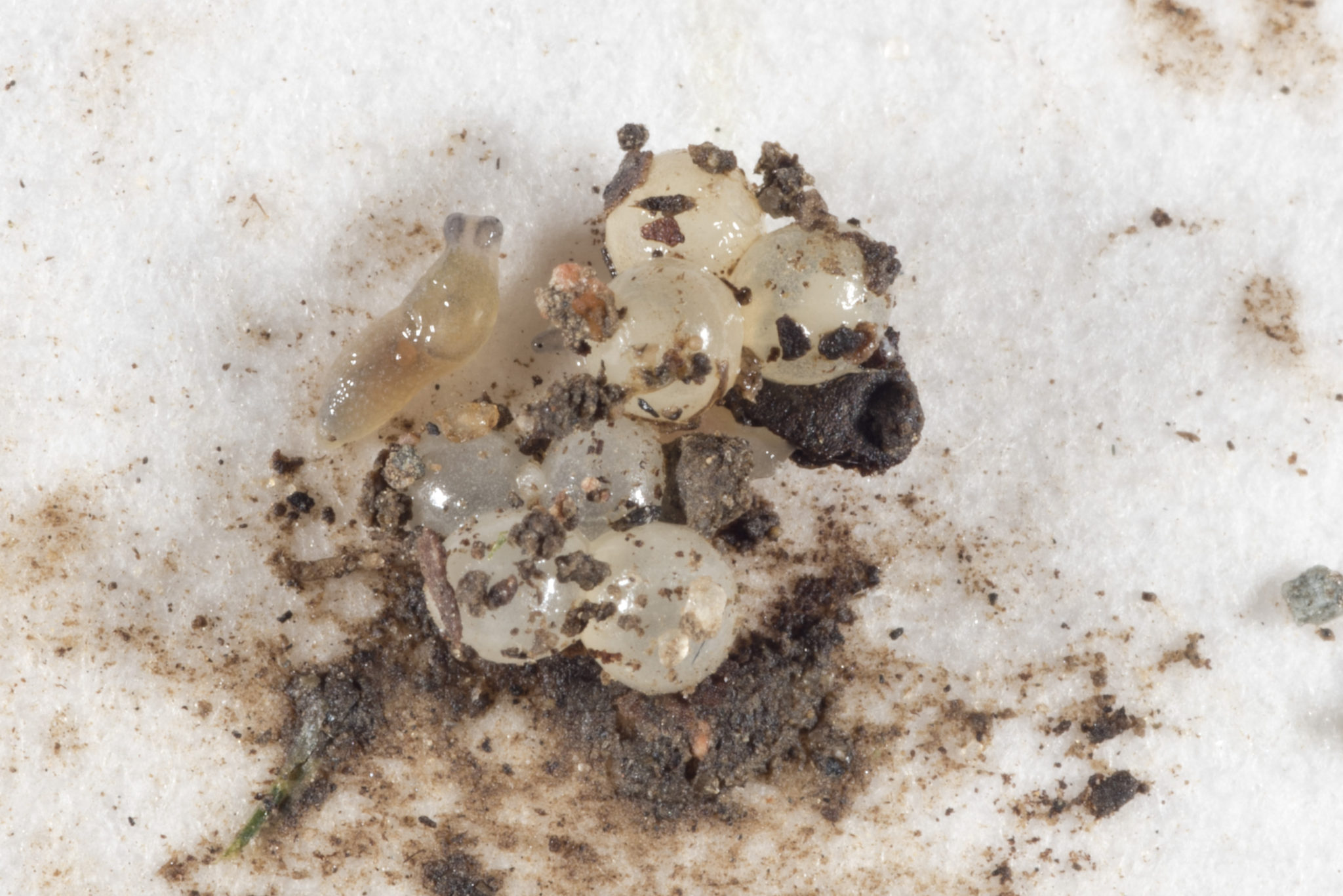
Increasingly, slugs are becoming a topic of discussion with field crop producers. Not from the slugs’ disagreeable nature, but because damage to crops is becoming more apparent.

Increasingly, slugs are becoming a topic of discussion with field crop producers. Not from the slugs’ disagreeable nature, but because damage to crops is becoming more apparent.
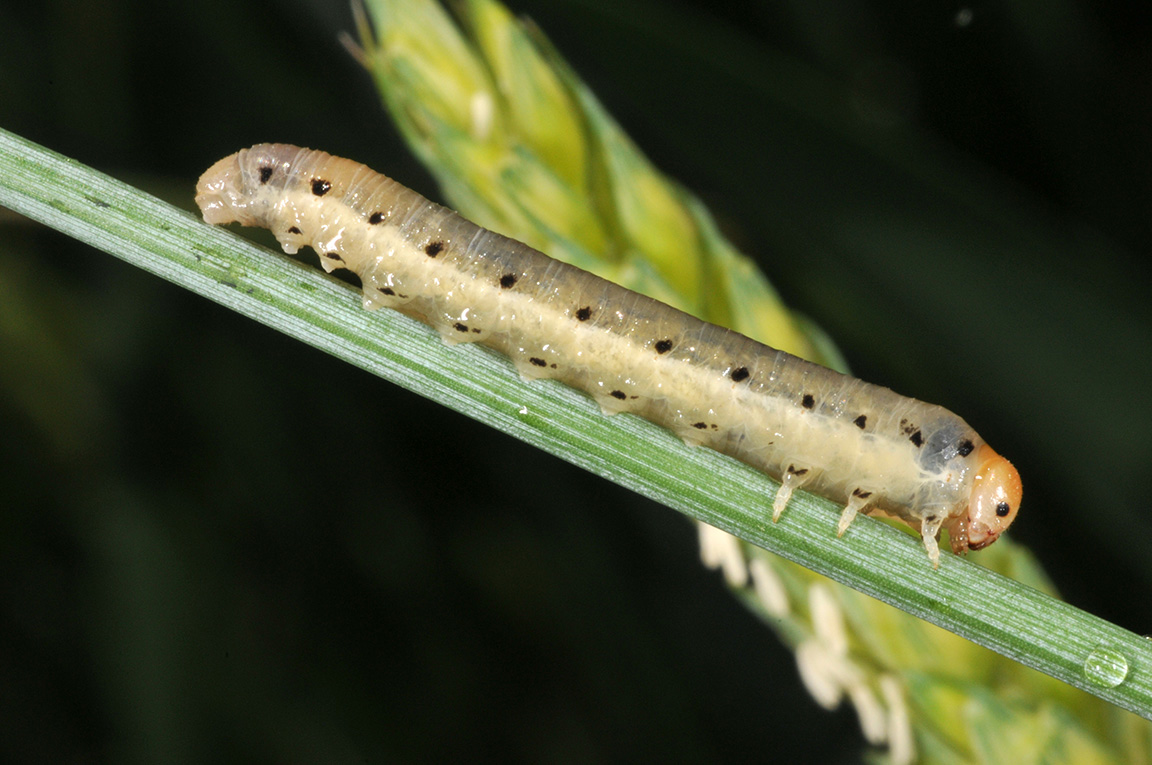
Small, caterpillar-like larvae, often confused with armyworm, can occasionally be found in wheat and some other grassy cover crops. These are not caterpillars at all, but are sawfly larvae, likely grass sawfly (Pachynematus sp.). Adult sawflies are insects with four wings that are distant relatives of the honeybee. They can be thought of as primitive wasps, but they do not have a stinger. The larvae are usually plant feeders and a few are pests of home gardens (rose sawfly or the confusingly named pear slug, for example). The sighting of foliage feeding sawfly larvae in wheat fields is infrequent in the Midwest. And although this species feeds on the leaves, it is minor pest. This is more of a curiosity than anything else, and an opportunity to learn the differences between different insect larval types – always fun! Full size larvae, about 1.25 inches, may feed on stems causing head[Read More…]
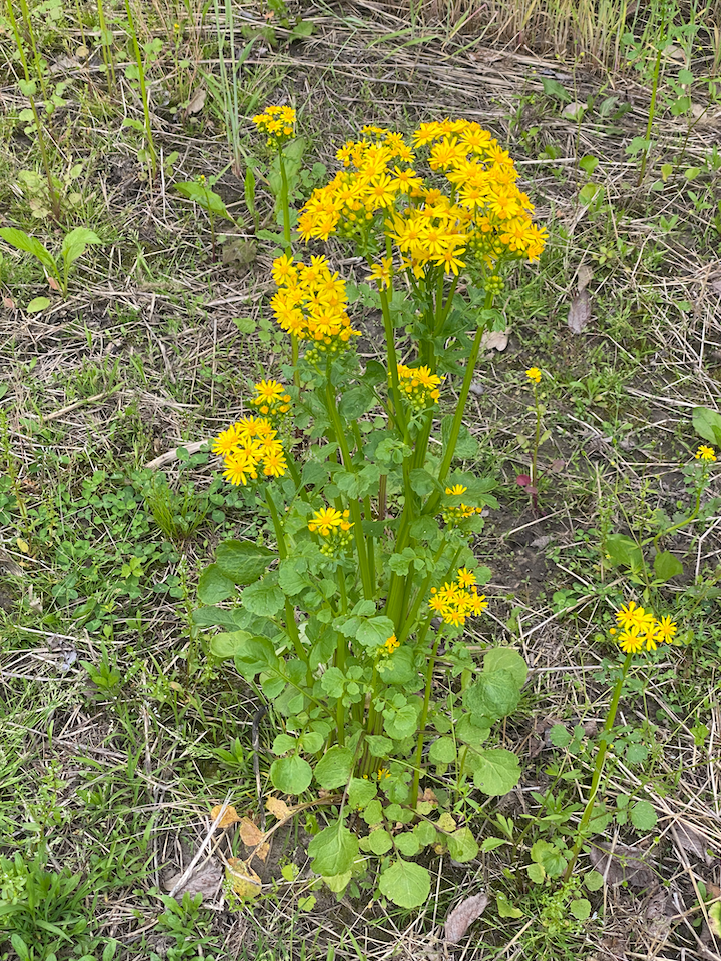
Every spring we receive several calls and e-mails about a certain 3-foot tall weed with yellow flowers (Figure 1).
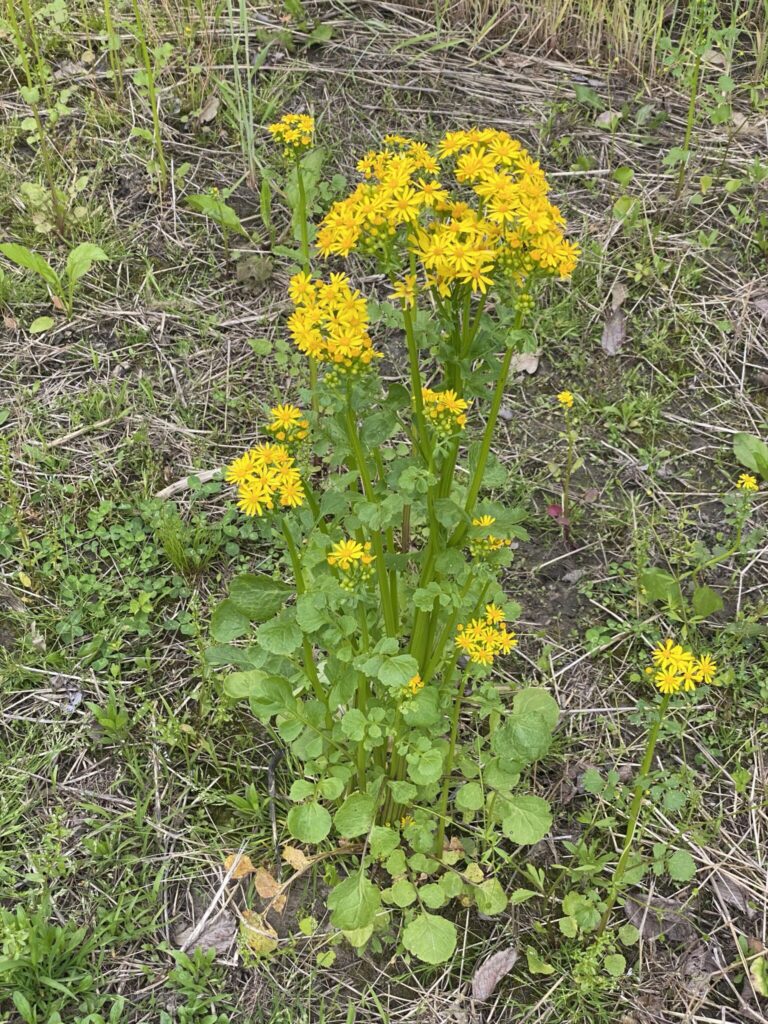
Every spring we receive several calls and e-mails about a certain 3-foot tall weed with yellow flowers (Figure 1). The most common yellow-flowered weeds we have in Indiana are cressleaf groundsel, the buttercup species, and dandelion. Occasionally, we have some fields of canola or rapeseed in the state. But, by far the most prevalent specie we see in no-till corn and soybean fields, and occasionally pastures, is cressleaf groundsel. I have only rarely observed wild mustard in Indiana. Wild mustard is more common in the northern tier of states near the Canadian border. This year, field activities were delayed due to cool temperatures and frequent precipitation. These weather conditions also allowed cressleaf groundsel to reach the reproductive stage, and it is currently flowering in many Indiana fields that haven’t been worked yet. This article is intended to provide information on the biology and life cycle of cressleaf groundsel, as well[Read More…]

Each fall we revise and update our Weed Control Guide for Ohio, Indiana, and Illinois (WS-16) publication. This year, in addition to incorporating a few new herbicide names and subtle label change information, we are adding information to the problem weed section on control of Cressleaf Groundsel, Poison Hemlock, and Annual Bluegrass. Since some of the best control strategies for all three of these weeds involve using herbicides applied in the fall, I decided to use this information in newsletter article. Cressleaf groundsel is a winter annual weed that has become more prevalent in pastures and agronomic crop ground over the past decade. The small seeds produced by this weed allow it to thrive in reduced and no-till systems as well as poorly established pastures. Cressleaf groundsel emerges as a rosette in the fall then bolts, flowers, and produces seed in the spring. Basal rosette leaves are deep[Read More…]

Every spring we receive several calls and e-mails about a certain 3-foot tall weed with yellow flowers (Figure 1). The most common yellow flowered weeds we have in Indiana are cressleaf groundsel, the buttercup species, and dandelion.
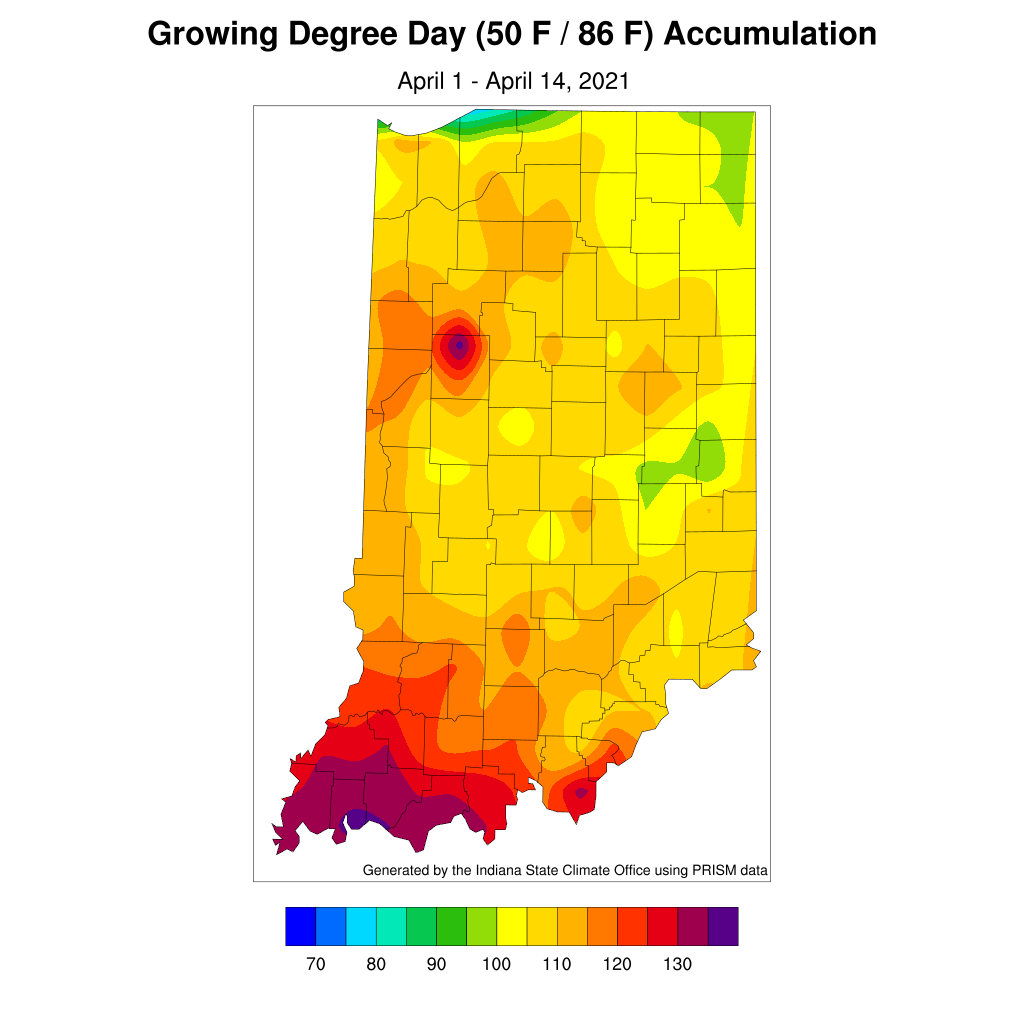
Just when we thought we were done wearing sweaters and using our furnaces, Mother Nature decided to throw us a curve ball.

Every spring we receive several calls and e-mails about a certain 3-foot tall weed with yellow flowers (Figure 1).
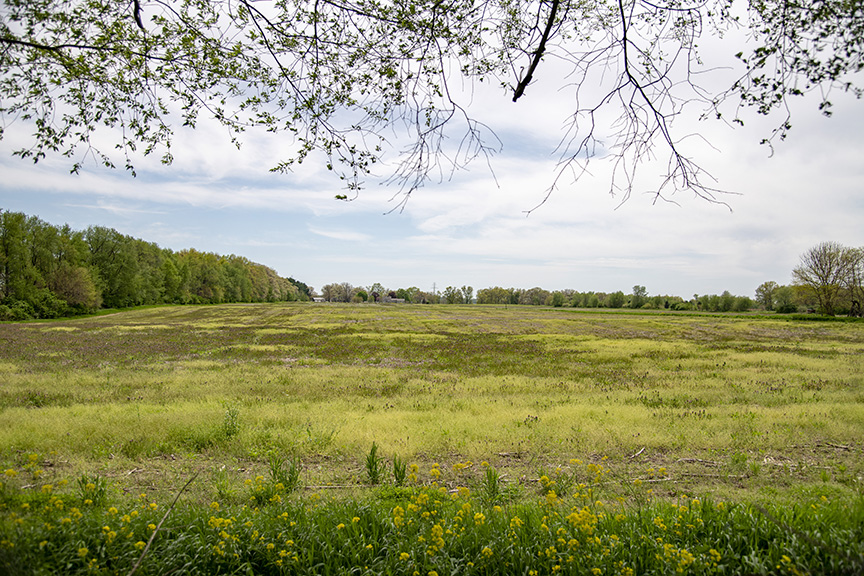
Moth flights for both black cutworm and armyworm have been impressive this spring. Unworked/untreated fields are plentiful, and so is the plant life, meaning that there has been no shortage of egg-laying opportunities for these pests. Once soils dry, there will be no luxury of time to prevent a green-bridge, that is to starve the small larvae before they switch from feeding on the dying weeds/cover crops to the emerging crop. So, should one be tempted to be proactive and add some “cheap” insecticide in with the burn-down herbicides. A few factors to consider: First, seed-applied insecticides and many varieties of Bt-traited corn offer some suppression of black cutworm. The systemic activity of the seed-applied insecticide, and/or the protein production of the Bt-corn are optimal when the corn seedling is actively growing, not so much when corn is stressed. Their performance against larger larvae, >0.5”, is greatly reduced, meaning the[Read More…]

Every spring we receive several calls and e-mails about a certain 3-foot tall weed with yellow flowers. This year, cressleaf groundsel is slower to develop, presumably because of the extended cold and wet weather which has not allowed much field work (spring tillage or burndowns for no-till) to proceed.
© 2024 Purdue University | An equal access/equal opportunity university | Copyright Complaints | Maintained by Pest&Crop newsletter
If you have trouble accessing this page because of a disability, please contact Pest&Crop newsletter at luck@purdue.edu.